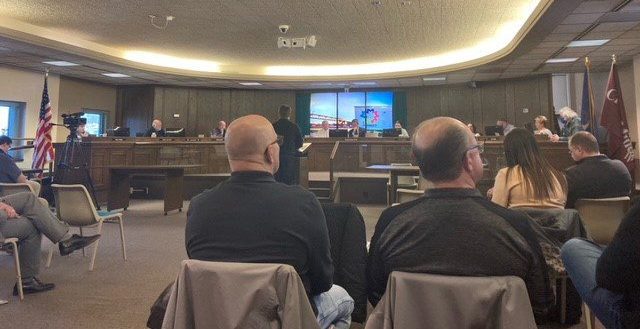MINOT — The Minot Police discussed with the Minot City Council possible reasons as to why an evacuation alert was sent to an unnecessary number of residents due to the train derailment on Sunday.
Chief of Police John Klug said he is still looking into exactly why and has come up with some answers.
“Hopefully it helps the public understand that we did everything right,” Klug explained. “The system just didn’t like what we did.”
Klug explained that the BNSF superintendent discussed with law enforcement around 2:15 a.m. as to whether an evacuation alert should be sent out, as it could be undetermined at the time whether hazardous materials had been spilled. The alert, sent out around 2:17 a.m., was intended to be sent to all homes within a 1500-meter radius.
Klug said that the two dispatchers working at the time had made calls to all four homes within the radius, but with no success.
“The next best option was to activate our Hyper-Reach system,” said Klug. “Hyper-Reach connects in two ways. [One, it] will send out a reverse 9-1-1 and it can be done to a selected area, it can be done to a whole city, a whole county, whatever we want it to do, it can do that. So the radius was selected, and that message was sent out.”
The second part of Hyper-Reach, according to Klug, is IPAWS (Integrated Public Alert and Warning System).
“IPAWS is the federal system that is in place for mass notifications,” Klug explained. “And that’s where we believe, in the initial phase of this, that’s where the problem came in.”
Because the alarm was intended to be sent to only four homes, Klug said the police listed a phone number for the individuals in those four households to call for more information.
“But when it went out beyond that, it locked up our phone lines, and those started dumping into state radio in Bismarck,” said Klug.
The police then cloned the message, and sent another one around 2:19 a.m. saying it does not affect anyone in Minot.
“The problem was, IPAWS works off of cellphone towers, so when that went out, it started pinging off cellphone towers, and there were calls that went as far as Logan, Sawyer, Surrey,” said Klug. “It pretty much hit everyone in our region.”
Klug continued, “It’s not that the system doesn’t work. The system works, but once the communication happens between Hyper-Reach and IPAWS, we have no control over it.”
Klug says the Minot Police is working with Hyper-Reach and IPAWS to see if there is any way to refine the system.
“What we’ve started to do preliminarily is work on what those messages would be, how they can be sent out safely with a message that’s clear,” Klug told the council. “IPAWS has a limited factor of 90 characters, whereas the Hyper-Reach is 300 and some characters.”
The police are now looking at whether hyper-reach is the best product, or if there are other products that would be better.
“We used CodeRED before Hyper-Reach and didn’t seem to have any major issues, but we didn’t use it a lot either,” said Klug.

“I’m glad to see this is being looked into deeply, as there was a tremendous amount of outreach Sunday morning. When they couldn’t reach central dispatch, a lot of those calls somehow landed on my phone,” laughed Mayor Shaun Sipma.
Sipma also said he believes the overall concern was that if alerts were to be sent out again, residents may assume it will not apply to them.
“It’s obviously a concern and something that we weren’t even aware would take place,” said Klug. “We’re reshaping how we send messages, and some of that is just a clarification of what people are supposed to do. We have learned a very important lesson from that, and we’ll change the way we do business.”
Klug responded to Alderman Tom Ross’ question on how often the system is tested by saying direct alerts are tested regularly, but mass alerts are difficult to test.